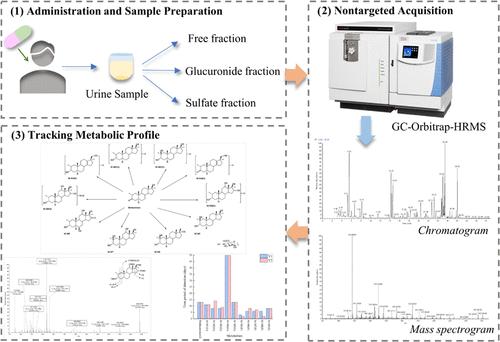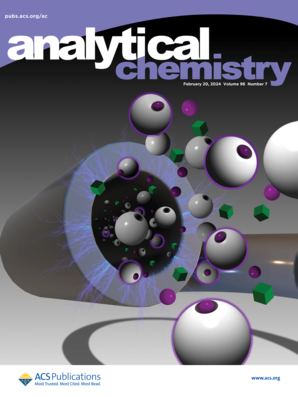Multiplex Nontargeted Framework Enables Tracking Metabolic Profile of Oxymetholone and Methasterone In Vivo at Nanogram Level by GC-Orbitrap-HRMS for Antidoping Purpose
IF 6.7
1区 化学
Q1 CHEMISTRY, ANALYTICAL
引用次数: 0
Abstract
Oxymetholone and methasterone are anabolic androgenic steroids prohibited by the World Anti-Doping Agency (WADA) for both in-competition and out-of-competition use. Detecting metabolites of exogenous steroids is crucial for establishing doping violations, making the study of these metabolites essential in antidoping efforts. This study investigated the urinary metabolic profiles of oxymetholone and methasterone using gas chromatography-orbitrap high-resolution mass spectrometry (GC-Orbitrap-HRMS) in nanogram level by utilizing a novel multiplex nontargeted framework protocol. Healthy volunteers each ingested one tablet of the drug, and urine samples were collected over 50 days in postadministration phase. The complete detection of the three fractions (free fraction, glucuronide fraction, and sulfate fraction) of the metabolites was carried out. The GC-Orbitrap-HRMS full-scan mode was employed to detect postadministration urine samples, comparing these with preadministration baseline urine samples to identify newly formed substances. Electron ionization (EI) mass spectra were used to infer possible metabolite structures, leading to the discovery of three novel metabolites of oxymetholone and two novel metabolites of methasterone. Notably, the newly identified oxymetholone metabolite, 2-methylene-17α-methyl-androstane-16ξ,17β-diol-3-one (O-M6), was detectable as a glucuronide conjugate up to 4 days after administration. The methasterone metabolite, 18-nor-17β-hydroxymethyl-2α,17α-dimethyl-5α-androst-13-en-3-one (M-M4), exhibited prolonged detectability as a glucuronide conjugate, being present in urine samples from both volunteers up to 50 days after administration. These findings have significant implications for antidoping purpose, providing extended detection windows for these anabolic steroids.

求助全文
约1分钟内获得全文
求助全文
来源期刊

Analytical Chemistry
化学-分析化学
CiteScore
12.10
自引率
12.20%
发文量
1949
审稿时长
1.4 months
期刊介绍:
Analytical Chemistry, a peer-reviewed research journal, focuses on disseminating new and original knowledge across all branches of analytical chemistry. Fundamental articles may explore general principles of chemical measurement science and need not directly address existing or potential analytical methodology. They can be entirely theoretical or report experimental results. Contributions may cover various phases of analytical operations, including sampling, bioanalysis, electrochemistry, mass spectrometry, microscale and nanoscale systems, environmental analysis, separations, spectroscopy, chemical reactions and selectivity, instrumentation, imaging, surface analysis, and data processing. Papers discussing known analytical methods should present a significant, original application of the method, a notable improvement, or results on an important analyte.
 求助内容:
求助内容: 应助结果提醒方式:
应助结果提醒方式:


